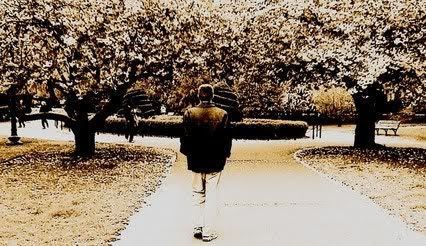Onto the next phase of my project. On March 30, I successfully concluded my 48th interview, bringing an end to the interviewing and data collection phase. Now, on to the coding and data entry, allowing me to be able to tabulate some basic demographics and verifying some initial conclusions. The transcription part of the project is a bugger, and has expanded from my initial projections to 4 times the amount of labour needed. It will probably be well into May before I have a final master transcript to present. Which is fine, because comparison group interviews won't be completed until the second week in May.
The participants come from a wide range of backgrounds and experiences. Here are the first returns on demographics of the participants:
48 gay men were interviewed between February 1st and March 30th. All of the individuals were self-identified gay men, with the majority reporting stage 6 on the Cass Sexual Identity Formation Scale (while Cass' development model is seen to be problematic in the modern sense for its linear nature as well as lack of applicability in the changed evolution of acceptance of gays, for a conservative society and in particular Northern Ireland, I believe that the model is useful in screening those who are early on their journey of sexual development and whose potential exhibitors of factors associated with problematic sexual identity formation are actually due to immature development as opposed to problematic development). Regarding this figure, 35 reported as stage six (the final stage), 1 in between five and six, and 4 in stage five. Only 7 participants reported in being in a lower stage, with the lowest stage reported being 3.
Participants fell into 4 age brackets (18-25, 26-39, 40-59, 60+) to correspond with being in early adulthood during one of the four eras of modern Northern Irish history: pre-troubles (12 respondents), early troubles (11 respondents), late troubles (13 respondents), and post political agreement (12 respondents). These respondents were ranked on a 5 point scale referring to their exposure to the thirty year period of violence known as "The Troubles" (1969-1998) with zero being the least exposed and 4 having the maximum exposure (4's were given based upon frequent exposure to civil unrest and/or victimization). Ranking on this scale was determined by Interviewer based upon participant responses. Of the total number of participants, 58% reported recollections of significant exposure. As was expected, the older age brackets had higher exposure than the lower age brackets with most in the youngest age bracket being assigned 1. For older participants, the exposure varied depending on what neighborhood the individual grew up in or career paths taken (3 respondents in particular experienced maximum exposure as a consequence of one having been a member of the Royal Ulster Constabulary/RUC, one a member of the British Army who served several tours of duty in Northern Ireland, and one a member of a paramilitary organization).
Geographically, 44 of the respondents grew up in Northern Ireland, with the rest growing up in England and the Republic of Ireland (The English respondent and one of the republic of Ireland participants moved to Northern Ireland at the beginning of the troubles to find work and stayed; The two other Republic participants were born near the border with Northern Ireland and spent time on both sides). Of those raised in Northern Ireland, 22 are from County Antrim (15 of which from Belfast), 11 from County Down, 8 from County Londonderry, 2 from County Tyrone, and 1 unspecified (Counties Fermanagh and Armagh fielded 0 participants).
As to the faith community of the participants, 20 were raised Catholic, 21 Protestant, 4 with no religious identification, 1 mixed (both Catholic and Protestant), and 2 not stating any religious background growing up. Protestants represented a diverse number of faiths with 6 Presbyterian, 1 Christian, 4 Church of Ireland/Anglican, 1 Christadelphian, and 1 Plimouth Brethren, 3 unspecified Protestants, and 5 mixed Protestant faiths (person was either raised with two different faiths simultaneously, or families converted among different sects at different times).
Overall participants were well representative of the general population in terms of geography, religious upbringing, and exposure to the Troubles.
.jpg)
No comments:
Post a Comment